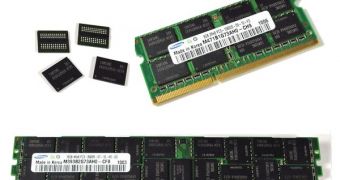Due to weakening demand, DRAM products have begun to pile up in vendors' inventories and, thus, are expected to suffer from a very pronounced decline in average selling prices, a phenomenon which has already began to make its effects felt.
Though the first and second quarters of the year proved to be, more or less, favorable for the IT market, the third proved less outstanding.
The DRAM market looks like it has been suffering a particularly unfortunate string of pricing and demand issues.
Apparently, demand for PCs of any kind has been decreasing and does not look poised to pick up, at least not enough to make a difference, during the back-to-school season.
PC OEMs are very cautious, according to inSpectrum, when it comes to procuring more DRAM and building up their inventories.
This is because the PC sales aren't expected to increase in momentum, which means that supply will continue to grow during Q4 of 2010, leading to a progressive decrease in ASP prices.
While DDR2 remained stable, average selling prices for mainstream 2GB DDR3 modules have gone down, sequentially, by 12% during the first half of September, to about US$36, which corresponds to USD 2.13 per gigabit.
The market watcher now predicts that the same ASP will keep falling, even dropping below USD 30 before the year is out.
The main factor behind this is the oversupply of DRAM that will persist during the October-December period.
For those especially keen on numbers, the spot prices, on September 6, for 1Gb DDR2 and DDR3 chips, were of USD 1.97 and USD 2.03, respectively,
“An oversupply of DRAM will continue into the fourth quarter, prompting vendors to cut their price further to stimulate content growth,” says inSpectrum.
“We project that ASP for a 2GB DDR3 module will drop below USD30 by end of this year, translating to a more than 15% drop as compare to ASP in September.”

 14 DAY TRIAL //
14 DAY TRIAL //